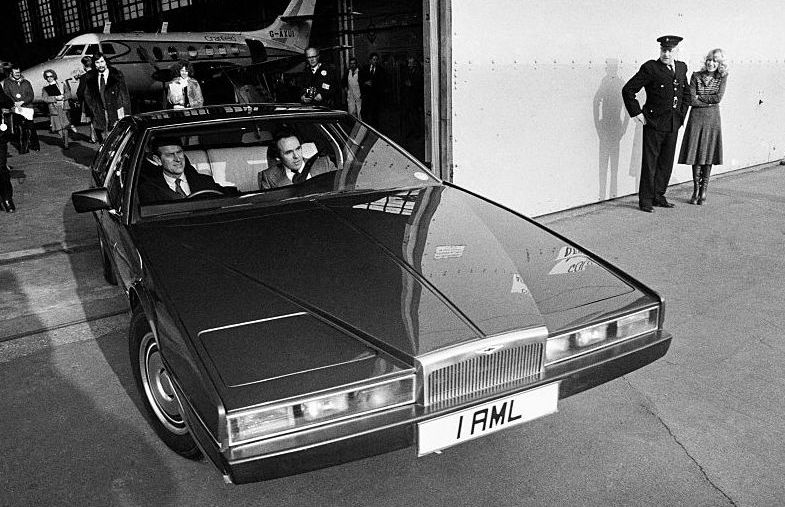
Aston Martin Lagonda Is One of the World’s Rarest Sedans
You can tell the Aston Martin Lagonda is a uniquely strange sedan, but if you ever see one in person it almost looks alien. Everything from its styling and interior design to the CRT-tube instrument displays seems like the epitome of suede-coolness from the 1970s. But you know it’s terribly dated now. Maybe the juxtaposition is what is so compelling about it today.
Lagonda Aimed At Rolls and Mercedes
The Lagonda was Aston Martin’s flagship aimed squarely at Rolls Royce and Mercedes limos. But it was also aimed at bailing the company out of their financial hole. It was hoped that orders would help puff up the company’s cash reserves to continue being able to produce cars.
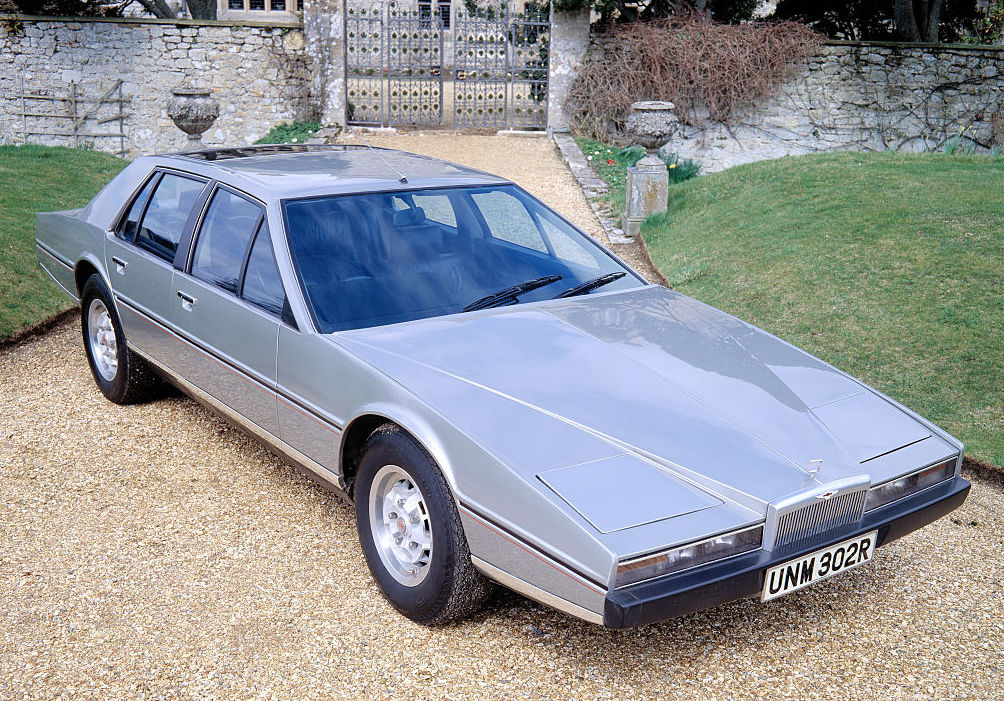
Walking up to one on display at car shows in the 1970s you could tell it was just a different beast, not anything like those big, stately, large Rolls. In many ways, it was the polar opposite of those. This is exceedingly low and long, maybe even massive.
1976 London Debut
Equally different was that in spite of debuting at the London Auto Show in 1976, the first ones didn’t roll out of AM’s factory until late-1979. Entirely hand-built, with an aluminum body, powered by the then-current DBS 5.3-liter V8, coil and wishbone front end and De Dion rear, it was both concept-like and almost an antique.
Other than the engine and transmission, almost everything about the Lagonda is, well, not normal. Take the chassis. It’s a tubular backbone containing the transmission and driveshaft with a massive steel sheet plate tied to it. Both the front and rear suspensions are hung off of this plate.
Aluminum Body Is William Towns’ Design
Tubular framework forms the basis for the aluminum body panels created with a vacuum form-like process called TI Superform. The design is the work of William Towns, with many joking he only used a straight edge. But at that time the folded, hard-edged look was derequire. Remember the Volkswagen Rabbit and Delorean? When you study the Lagonda there is plenty of crown and sweep in each and every panel.
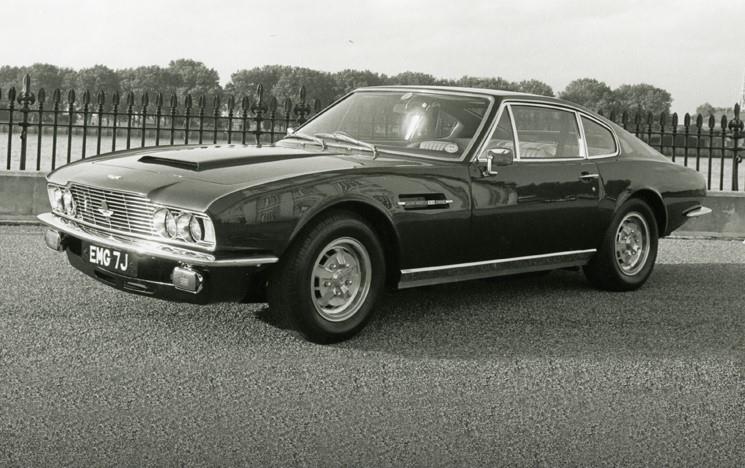
The Lagonda was two-feet longer than the AM DBS of the time. With a 114 inch wheelbase, it’s over 208 inches long, but only 51 inches high. It looks even leaner than it really is with the stainless trim riding high on the rockers with black paint giving the impression the body ends at the trim. In later versions, this was eliminated and the body color went down to the rockers. It tips the scales at only 3,800 lbs. That may seem like a lot, but again, this thing is massive.
First Production Digital Dash
Now for the dash. The Lagonda was the first production automobile with a digital dash. There were light-emitting diodes for the digital displays and touch-sensitive switches. The gauges are gas plasma digital displays for a comprehensive myriad of readouts.
The CRT-tube displays include MPH/KPH, a mileage/consumption figure, tach, oil, temperature, fuel, voltmeter, interior/exterior temperatures, time, date and 16 warning lights. Remember, this is in 1975. Later versions canned the troublesome CRTs for vacuum fluorescent displays. Even then electronics was advancing at a fairly fast clip.
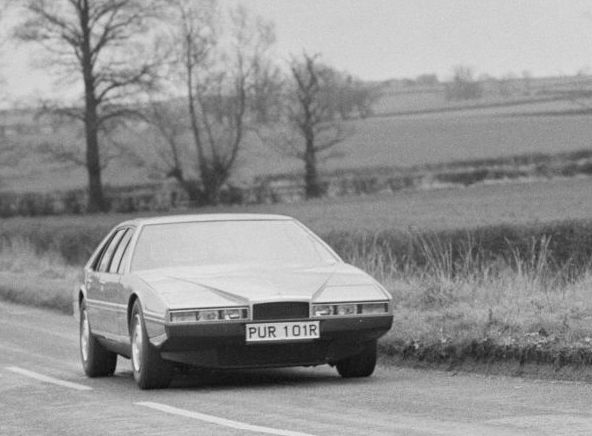
The panel hiding the switches only had circular indications for where you should poke to get what it is you’re looking for. The same system is used for the door switches. Burglar alarm, eight seat adjustments, three pedal positions, steering column adjustment, and a gas strut control on each door to avoid slamming.
The engine from the DBS is a DOHC V8 with 340 hp and 400 lb-ft of torque. Carburetion is from four 2-bbl Weber carbs. It was hooked to a garden-variety Chrysler three-speed automatic transmission. Fuel economy was in the single digits, but if you could afford a Lagonda who cared?
Low Numbers
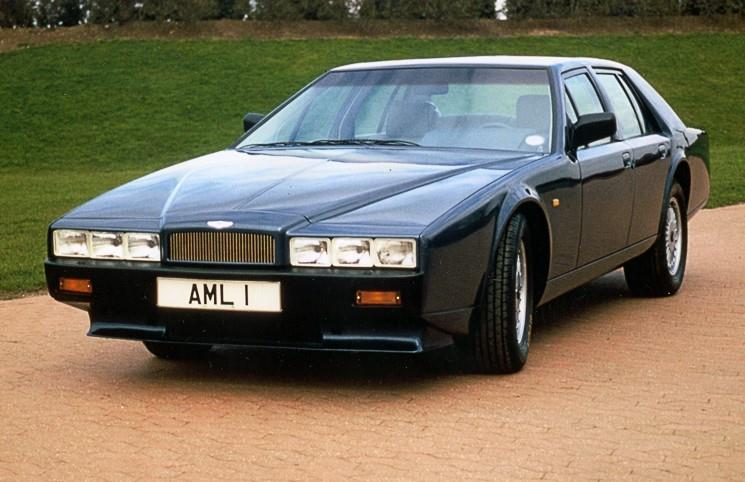
AM initially claimed 200 orders from that first London showing in 1975. How many of those actually received their Lagonda we’ll never know. US imports didn’t arrive until 1982. An updated version with softened edges but still distinctly Lagonda debuted in 1987. AM ended Lagonda production in 1990.
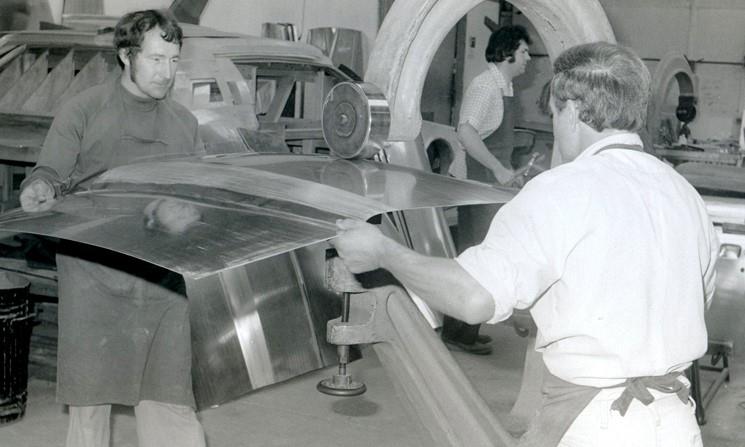
Total production came to 645 according to AM. It said over 2,200 man-hours went into each Lagonda. AM tried reviving the Lagonda in 2014.
Only 25 per year made it to our shores, so you’ll rarely see one. If you do, don’t scoff. Take it in and try to imagine what it was like in 1976 and then see if you’re more than impressed for what an odd, yet distinctive statement this must have made slinking down Main Street. Especially compared to most everything on the road then, it was an alien vehicle for sure.



